
In my previous blog entry about the history of Silent Hill's cult, I had originally intended to include a small section about the cult's name, as it is accepted by series fans: "The Order". However, it wasn't really relevant to the specific topic of the in-game cult history, since it is a more meta point about the games in general. So instead, I decided to make it a brief independent article:
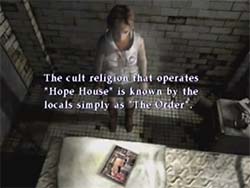
Joseph's article is the source of
the name "The Order".
I am one of a subset of Silent Hill fans who does not like using the term "The Order" to refer to the game's cult. For one thing, the name reminds me of the movie and Homecoming, which causes a resentful knee-jerk reaction. But there are also other in-game evidences to suggest that naming the cult might not have been intentional.
The primary source for the name "The Order" comes from an article written by the journalist Joseph Schreiber which details an orphanage that is run by a sect of Silent Hill's cult.
This article is present in Silent Hill 3 as well as Silent Hill 4: The Room, but there are slight differences in the text of the document in each game. Most noticeably, the name of the orphanage changes between the games. In Silent Hill 3 the article appears in a patient room in Brookhaven, and the orphanage name is given as "Hope House". In The Room, however, that same article gives the orphanage the name "Wish House". It was apparently changed sometime in the development of The Room, or it was mistranslated to begin with.
Silent Hill 4 also doesn't give us any indication as to whether the appearance of this article is intended to retcon the article in Silent Hill 3, or if it players are to assume that the actual text of the article changed at some point after the magazine's publication. Perhaps the article was reprinted in a different magazine and the editor or author changed the name. We don't know if it's the same magazine because in Silent Hill 3 the magazine is closed and we only see its cover and never the page of the article, but in Silent Hill 4 the magazine is sitting open on a desk and we see only the page of the article and not the cover.
"The Order" comes from an article that appears in both Silent Hill 3 (LEFT) and Silent Hill 4 (RIGHT).
But if the name of the orphanage changes between versions, can we trust the name of the cult to be correct?
As far as I can remember, "The Order" is never referred to anywhere else in The Room... [More]
9fac77d9-95be-4c33-a431-c4ba4970c07d|6|4.3
Tags:The Order, Silent Hill, Silent Hill 3, Silent Hill 4: the Room, Silent Hill Homecoming, movie, cult, occult, religion, church, Joseph Schreiber

In one of my earlier posts titled "'Silent Hill' is NOT about 'repressed guilt'; it's about occultism!", there seemed to be some misunderstandings about the interpretations that I offered. For one thing, reader Malik commented:
"I have to disagree. The series has never established the cult as the basis for the goings-on in Silent Hill. It is never explicitly stated that the cult or Alessa are the true source of the supernatural power ..."
The commentor is correct on that point. Though, I don't think I ever said that Alessa and the cult were the ultimate source. If you got that impression, then there might have been a misunderstanding or miscommunication, and I apologize for not being clear. To be clear: I was arguing that the plots of the game were focused on the cult and Alessa, and how they affected this supernatural power -- not that the cult is the cause of the power. I thought about responding with my own comment on that original post, but I felt that it would be more appropriate to just write a new blog article about it, so that I could spend more time exploring the town's history, as it was established by the original creators. So, Malik, I hope you read this. and I hope it makes more sense. I'd love to hear your feedback.
Please note that much of this post is speculation. The games themselves provide very little concrete information about the extended history of the cult and region -- especially prior to the Civil War. The following is all retroactive explanation and may not represent the original intentions of the creators. This will be my own, personal opinion and interpretation regarding the nature of Silent Hill's otherworldly power.
The Place of the Silent Spirits
I never intended to imply that the cult and Alessa created the supernatural phenomena, nor that they are the power's ultimate source. I agree that the power likely existed (in some form) far prior to the events of the first game.
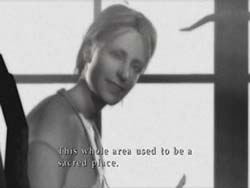
Mary refers to Silent Hill as a "sacred place".
Mary's comments regarding the place being "sacred" in the past implies that early inhabitants (probably the Native Americans) were aware of the supernatural effects of the region going back hundreds - maybe thousands - of years. Since the Natives saw the place as being "sacred" and beautiful, I tend to believe that the power did not originally manifest demons or project people's nightmares onto reality during these periods of history. Instead, I would imagine that the force (whether conscious or not) would have been more benign - maybe even benevolent.
We don't know much about the natives' beliefs prior to the arrival of European colonists, and what little we do know is possibly clouded by the lens of the European colonists and cultists.
Based on what is known about real-world Native American beliefs, it is probably safe to assume that the natives of the Toluca Lake region would likely have worshipped any regional supernatural power as "ancestral spirits" or as "spirits of nature". The Book of Lost Memories can be found in Silent Hill 2 after beating the game, and it supports this idea and tells us about the nature spirits:

"They called this place 'The Place
of the Silent Spirits'. By 'spirits',
they meant not only their dead
relatives, but also the spirits that
they believed inhabited the trees,
rocks and water around them."
- Lost Memories book (Silent Hill 2)
The name "Place of the Silent Spirits" may simply be an innocent callback to the game's title, or it could be a significant clue. The fact that the spirits were "silent" implies that the natives were not able to talk to it; or at least, the spirits did not talk back. This implies that the "spirits" are probably not a conscious entity. Even though it can apparently react to the thoughts - and even desires - of the people it comes in contact with, it may not have an intelligence or will of its own (which I explained in my earlier post about repressed guilt)... [More]
643444f5-4ba4-4d6c-818b-921ecc1c7154|8|5.0
Tags:Silent Hill, Silent Hill 2, Silent Hill 3, Silent Hill 4: the Room, history, cult, occult, black magic, religion, spirituality, Christianity, Satan, god, Native Americans, Glooscap, Otherworld, paradise, Maine, colony, Civil War, colonial America, Toluca Lake, tourism, drugs

UPDATE SEPTEMBER 1, 2016:
The release of Dark Souls III has finally answered this question. That game has rendered the speculation below completely moot and invalid. However, this post will remain preserved for posterity.
There is considerable debate within the Dark Souls fan base regarding whether or not Knight Solaire of Astora may be the forgotten son of Lord Gwyn, and the God of War. The game contains many references to a forgotten God of War, who was the son of Lord Gwyn, the God of Sunlight. The primary source for this is the item description for the Ring of the Sun's Firstborn:
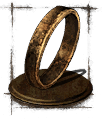
"Lord Gwyn's firstborn, who inherited the
sunlight, once wore this ancient ring.
Boosts the strength of miracles.
Lord Gwyn's firstborn was a god of war,
but his foolishness led to a loss of the
annals, and rescinding of his deific status.
Today, even his name is not known." The game doesn't specify what the God of War did to be stripped from the annals, but the blunder cost him dearly. As a punishment, Gwyn and the other gods rescinded the God of War's diefic status and expelled him from Anor Londo.
But it didn't end there. Based on the content of the game itself, it appears that the gods also removed all references to him. This included removing or destroying any statues depicting him and redacting his name from records. Both his name and face are lost to history, as is his fate. Was he cast out of Anor Londo? Was he made mortal? Was he cast out of the world, entirely?
The gods made an effort to eradicate all records and traces of the God of War.
Statues of him were removed or destroyed all throughout Anor Londo and Lordran.
If the Warriors of Sunlight covenant (lead by the God of War) existed prior to the God of War's expulsion from Anor Londo, then it would also stand to reason that the gods disbanded the covenant. It's highly unlikely that gods would have permitted the covenant to continue to function, since its followers would be able to continue to teach of the existence of the God of War. These followers would likely have been forced to renounce the covenant or become an underground cult. The fact that the covenant still exists and has followers is likely due to the waning influence of the gods after Gwyn left to link the flames and the gods were forced to abandon Anor Londo.
The Sunlight Medal does offer one clue as to the fate of the God of War and his covenant. It suggests that the forgotten god still lives, and still watches over his followers:
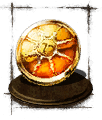
"This faintly warm medal engraved with the
symbol of the Sun, is the ultimate honor,
awarded to those who summon the Warrior
of Sunlight and complete a goal.
The symbol represents Lord Gwyn's firstborn,
who lost his deity status and was expunged
from the annals. But the old God of War
still watches closely over his warriors." In any case, we meet one NPC Warrior of Sunlight during the game: Solaire of Astora.
Solaire doesn't reveal much about himself. He is a Warrior of the Sunlight who has a strong reverence for the sun itself. In fact, he is on a possibly futile attempt to obtain his own "sun"... [More]
c468e0a8-487d-48c8-bd28-5fb3417fe068|3|4.7
Tags:Dark Souls, Dark Souls II, Solaire, Astora, God of War, Gwyn, Andre of Astora, Oscar of Astora, Sunlight Maggot, sun, Warrior of Sunlight, Lightning Spear, lightning, miracle, covenant, co-op, multiplayer, ring, armor, sword, lore, annals, Faraam, Nameless King
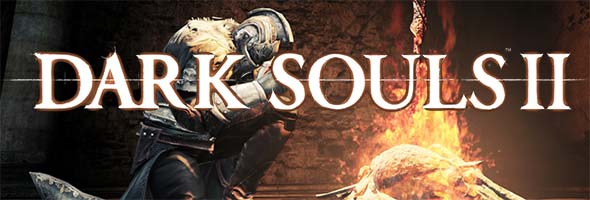
I recently posted my much-belated review of Dark Souls II. In it, I criticized the game for having lackluster online components, but didn't go into much detail other than to say that Soul Memory seems like a non-optimal matchmaking method and that invasions are rare and reserved for elite players. I wanted to take a moment to go over some of the other complaints that I have with the game's online mechanics, as well as to offer some suggestions for improving them. While it seems unlikely that From will make significant mechanical changes at the fundamental levels that I am about to propose, the fact that there is still at least one more DLC incoming means they have the opportunity to do so.
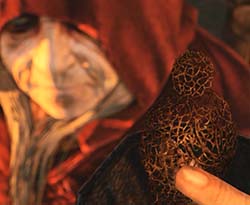
Human Effigies were too rare to be
the only means of revival.
When the game initially released, humanity could only be restored by consuming a Human Effigy. This mechanic was an interesting departure, since the previous games had both relied on defeating bosses as the primary way of reviving. The idea of requiring a consumable item to restore humanity wasn't exactly earth-shattering or fundamentally broken, but the specific implementation had one major flaw: Human Effigies were very rare, and there was no way to farm them!
This made deaths feel extremely punitive and proved unpopular with players and critics, and so From reversed their design and went back to granting revivals from boss kills.
After the 1.03 patch, maintaining your humanity has become almost trivial. This is mostly due to the fact that the White Soapstone can be placed anywhere in the level (including right outside a boss's fog gate), and that players can use the Small Soapstone to fully restore humanity by spending a couple minutes killing standard enemies. By using the Small Soapstone, you spend a few minutes in another player's world, and killing enemies shortens this duration. At the end, you are sent back to your own world with fully restored health, humanity, item condition, estus, and a small reward (usually a Smooth & Silky Stone).
Revival via the Small Soapstone makes it far too easy to keep your humanity. It requires only a minimal investment of time and effort, and you don't even have to beat a boss to fulfill it. This practically nullifies the cumulative loss of health from hollowing and makes it almost trivial to maintain humanity throughout most of the game.
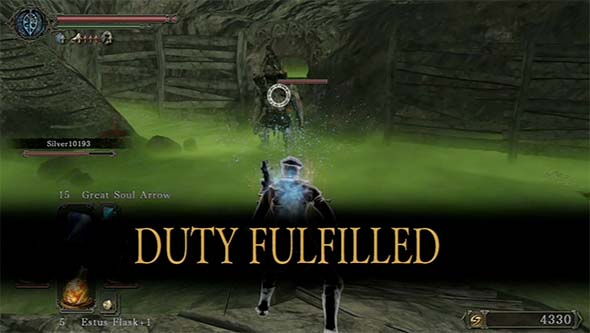
The Small White Soapstone can be used to easily restore full humanity - sometimes without any effort by the player!
Instead of full restoration, it should provide a partial restoration.
Fixing this imbalance seems easy enough: completing the Small Soapstone task should only partially restore the player's humanity. Instead of a full restore, the player's max HP could be restored equivalent to a single death... [More]
7a1f7437-6f97-409e-aacb-9ef8e2f0c931|0|.0
Tags:Dark Souls II, Dark Souls, From Software, Namco/Bandai, online, multiplayer, co-op, summon, PvP, soul memory, invasion, phantom, shade, black phantom, red phantom, white phantom, blue phantom, gold phantom, covenant, soapstone, Cracked Red Eye Orb, Cracked Blue Eye Orb, Human Effigy, Chariot Executioner, Old Monk
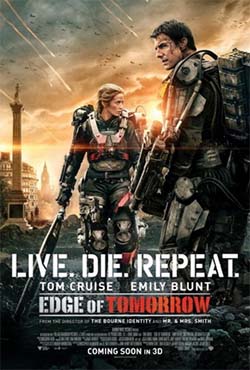
Edge of Tomorrow mimics video game respawning.
Video game adaptations have generally been pretty awful. Edge of Tomorrow isn't based on a video game (it's actually based on a Japanese novel), but it manages to feel more like a video game than any game-based movie that I've ever seen, while still providing an interesting and fun narrative built upon a unique time-travel premise.
The movie takes place in a present-day earth that has been invaded by hostile aliens, slowly but steadily consuming the cities of Europe, Asia, and the Middle East, and the combined forces of earth's nations can't slow them down. William Cage (Tom Cruise) is ordered into active combat in a surprise assault against the aliens, despite being a propaganda officer rather than an actual soldier. During the assault, the human soldiers are ambushed and slaughtered, but Cage manages to kill an alien only to be boiled alive by the alien's acidic blood. However, Cage gains the alien's ability to go back in time to reset the day after he dies. So when Cage dies, he immediately wakes up back at the army base just prior to the invasion to start the day over again.
Cage gets stuck in a "Groundhog Day" cycle, constantly reliving the same failed invasion over and over again. He tries to change the outcome, but plays such an insignificant role in the grand scheme of things that his efforts are all in vain, and he must repeatedly experience the invasion until he has effectively memorized every event. In each repeat cycle, he gets a little bit better at staying alive, just like a video gamer playing a trial-and-error level in an old-school video game (think Castlevania, Contra, Ninja Gaiden, or the more recent Demon's Souls). He learns the location of every alien, every mortar shell, every landmine, every piece of flying debris, until he can essentially walk through the invasion with his eyes closed either avoiding or eliminating threats with virtually no effort.
As a gamer, it was very interesting for me to watch a film narrative that is completely based around one of gaming's central conceits: respawning after a character dies... [More]
e065c317-ffa9-4e4f-9881-8ced624b0e35|1|5.0
Tags:Edge of Tomorrow, Tom Cruise, Emily Blunt, Warner Brothers, science fiction, action, time travel, alien, invasion, video game, death, respawn, trope, groundhog day
|

| 12 | | | | | | | 60 | | 11 | | | | | | | 55 | | 10 | | | | | | | 50 | | 09 | | | | | | | 45 | | 08 | | | | | | | 40 | | 07 | | | | | | | 35 | | 06 | | | | | | | 30 | | 05 | | | | | | | 25 | | 04 | | | | | | | 20 | | 03 | | | | | | | 15 | | 02 | | | | | | | 10 | | 01 | | | | | | | 05 |
|